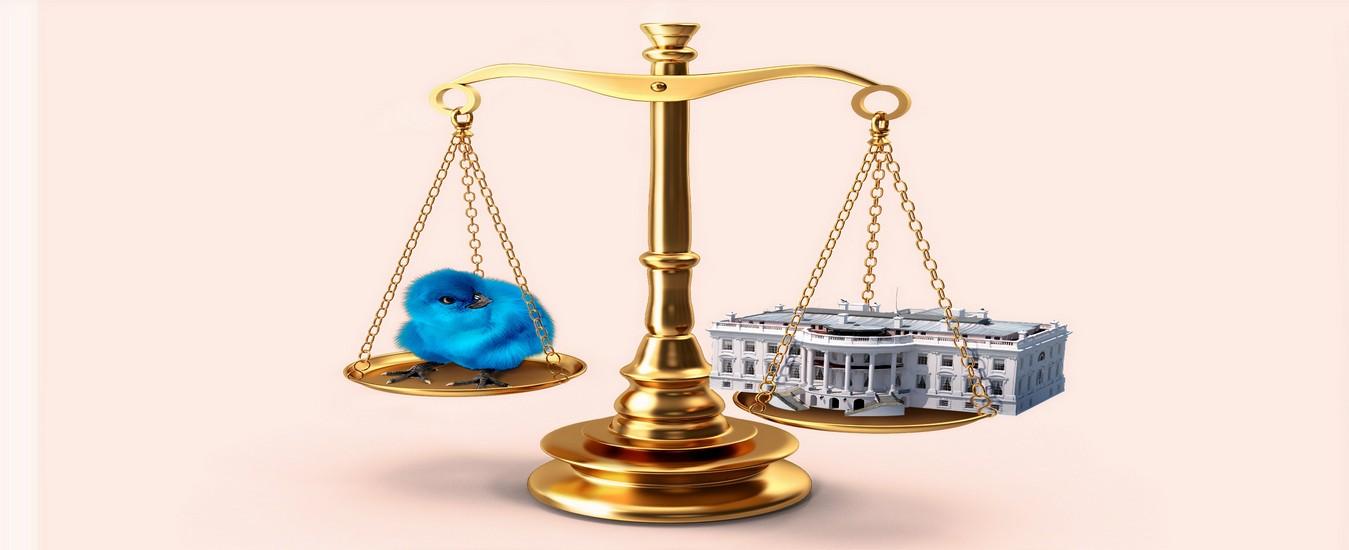Does Twitter Tell Who Will Be the Next President? Comparing Donald Trump’s and Hillary Clinton’s Twitter Influence - Peter Gloor

Over the last year Donald Trump has been doing a brilliant job kindling his initially highly unlikely candidacy as US Presidential applicant. Following the principle that there is no good or bad PR, that any news is good news as long as it is in the news, he has acted as a master provocateur. He has been a genius in hitting the soft spots of US society, constantly provoking increasingly broader parts of society with over 32,000 (and rapidly growing) racist, sexist, and religiously offensive tweets.
I was curious to see how his Twitter behavior would compare with the articulations on Twitter by his Democrat competitor for the job, Hillary Clinton. Therefore I used Condor’s Twitter EgoFetcher (thanks, Joao, for coming up with the idea) to collect the most recent 10,000 tweets about each candidate on August 4, 2016 at 10.00AM. The EgoFetcher works in four steps: in step 1 it takes the last N (for example 10,000) tweets about the search term or Twitter handle (e.g. “Donald Trump”). Note that normally – except for an individual’s own tweets - the search API of Twitter only returns last week’s tweets. This is not a problem for this search, as people send thousands of tweets about each candidate per hour. In step 2 it constructs a network with a link from twitterer B to twitterer A if B retweets A, or B mentions A in a tweet. In step 3 it takes the timelines of the 480 most influential people in the search results, the influence of these people is measured through their degree in the retweet network from step 2. For twitter users, their timeline is all their tweets, sorted from newest to oldest. In step 4 it adds for each tweet collected in the previous steps the first 100 retweets.
The picture below shows the combined Twitter network, with the tweets about Donald in yellow, and about Hillary in green.
When combining the search results of the queries for “Donald Trump” and “Hillary Clinton”, and measuring their betweenness centrality, which in social network analysis is commonly taken as a metric of influence, Donald easily beats Hillary. The pie chart below shows the betweenness centralities of both the search queries for the candidates, as well as the betweenness of their Twitter personalities (realDonaldTrump and HillaryClinton).
So will Donald become the next president? Not so fast.
When looking at each of the network separately, a different picture emerges. The picture below shows the network for Hillary at left, and for Donald at right. The green twitterers are the ones returned in the original search about the search term (“Hillary Clinton” or “Donald Trump”). The yellow twitterers are the people tweeting about the most influential 480 twitterers among the green people.
The first thing we note is that not only is the timeline crowd of Hillary more numerous than Donald’s (18,363 people retweeting about Hillary compared to 17,295 for Donald), but they are also much more retweeted (91,681 retweets instead of 85,890).
When calculating the six honest signals of collaboration described for example in my new book manuscript, the picture becomes even more pronounced.
The metrics shown above are calculated using the dynamic social network analysis features of Condor. Activity is the total number of tweets in the EgoFetcher network above originating from each candidate, where Hillary beats Donald. Emotionality, sentiment, and complexity of language are calculated using the machine learning natural language processing features of Condor, based on the language used in the Tweets. There is not much difference here, although Hillary’s fan base uses slightly more complex language, while Donald’s constituency is slightly more positive, which at least might be partially explained by his hashtag #makeAmericaGreatAgain. The large difference is in creativity, passion, and respect. Creativity is measured as average number of changes in network position among all the twitterers, from being central to be peripheral in the network. In earlier work we have shown that the more people rotate in their network position, the more creative they are. Passion is measured as the time it takes a person until he or she responds to a tweet. Respect is measured as the time it takes all other people to respond to her or his tweets. And in these three scores Hillary’s community beats Donald’s handily.
I will be curious to see if increased creativity, passion and respect translates to the election results on November 8.
Recommended Articles
Seeing is Believing.
Many software demonstrations end up being generic product promotions. We take the time to understand your specific needs before preparing a customised demonstration that provides you with: • Case studies of how organisations similar to yours have used our technology to improve related issues. • Scientific evidence published in major journals to back-up our statements. Please complete this form and a platform expert will be in touch shortly to take you through a demo of our technology with evidence relevant to your needs.







